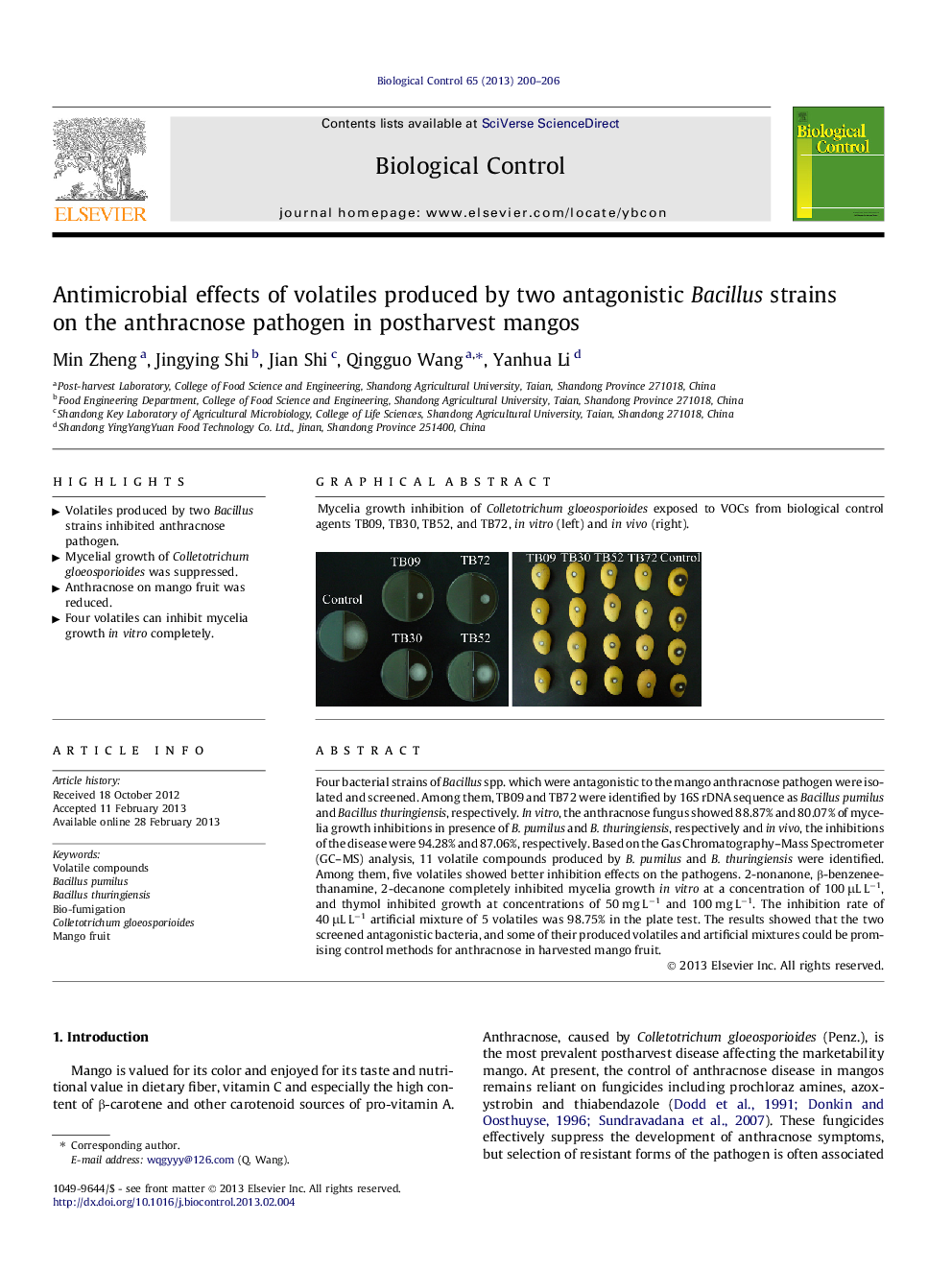| کد مقاله | کد نشریه | سال انتشار | مقاله انگلیسی | نسخه تمام متن |
|---|---|---|---|---|
| 4504010 | 1321052 | 2013 | 7 صفحه PDF | دانلود رایگان |

Four bacterial strains of Bacillus spp. which were antagonistic to the mango anthracnose pathogen were isolated and screened. Among them, TB09 and TB72 were identified by 16S rDNA sequence as Bacillus pumilus and Bacillus thuringiensis, respectively. In vitro, the anthracnose fungus showed 88.87% and 80.07% of mycelia growth inhibitions in presence of B. pumilus and B. thuringiensis, respectively and in vivo, the inhibitions of the disease were 94.28% and 87.06%, respectively. Based on the Gas Chromatography–Mass Spectrometer (GC–MS) analysis, 11 volatile compounds produced by B. pumilus and B. thuringiensis were identified. Among them, five volatiles showed better inhibition effects on the pathogens. 2-nonanone, β-benzeneethanamine, 2-decanone completely inhibited mycelia growth in vitro at a concentration of 100 μL L−1, and thymol inhibited growth at concentrations of 50 mg L−1 and 100 mg L−1. The inhibition rate of 40 μL L−1 artificial mixture of 5 volatiles was 98.75% in the plate test. The results showed that the two screened antagonistic bacteria, and some of their produced volatiles and artificial mixtures could be promising control methods for anthracnose in harvested mango fruit.
Mycelia growth inhibition of Colletotrichum gloeosporioides exposed to VOCs from biological control agents TB09, TB30, TB52, and TB72, in vitro (left) and in vivo (right).Figure optionsDownload as PowerPoint slideHighlights
► Volatiles produced by two Bacillus strains inhibited anthracnose pathogen.
► Mycelial growth of Colletotrichum gloeosporioides was suppressed.
► Anthracnose on mango fruit was reduced.
► Four volatiles can inhibit mycelia growth in vitro completely.
Journal: Biological Control - Volume 65, Issue 2, May 2013, Pages 200–206